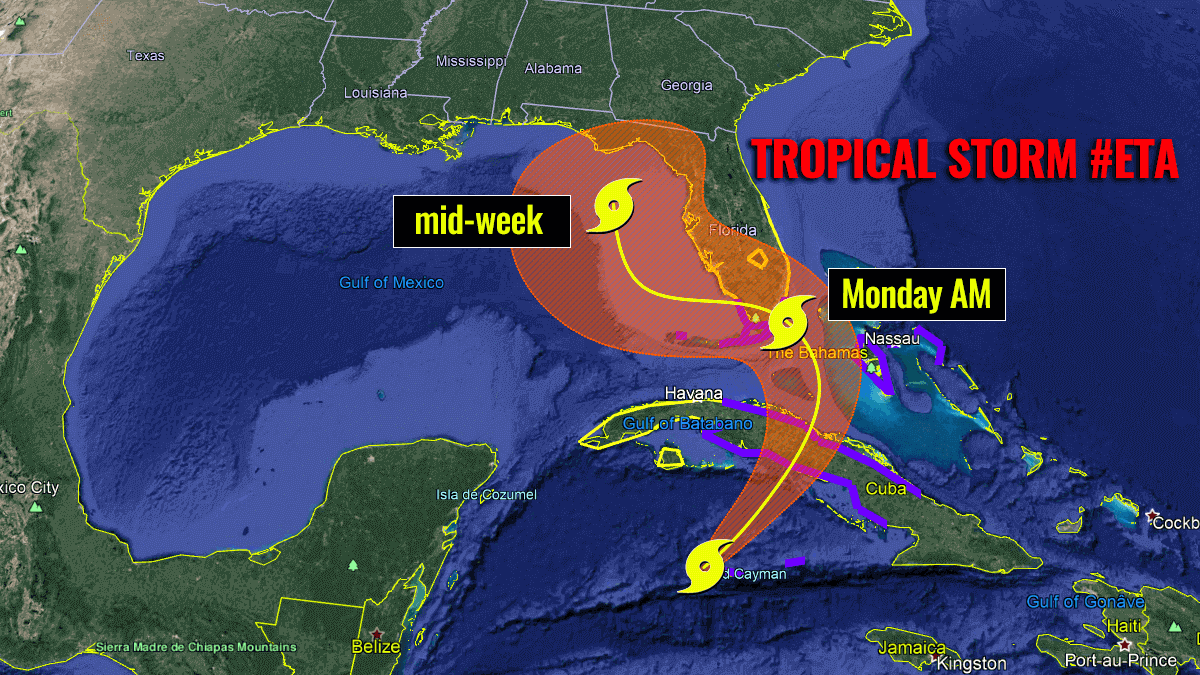Types of Storms: Storm Tracker

Storm tracker – Storms, formidable displays of nature’s power, manifest in diverse forms, each with distinct characteristics and destructive capabilities. Hurricanes, cyclones, and tornadoes, though often conflated, are distinct meteorological phenomena with unique formation processes and impact profiles.
Hurricanes and Cyclones
Hurricanes and cyclones, tropical storms of immense power, share several similarities. Both originate over warm ocean waters and derive energy from the evaporation and condensation of water vapor. As they rotate, they develop a central low-pressure system, known as the eye, surrounded by a wall of intense thunderstorms.
However, a subtle distinction exists between the two. Hurricanes occur in the Atlantic and Eastern Pacific oceans, while cyclones form in the Western Pacific and Indian oceans. This geographical difference arises from the direction of the Earth’s rotation, which influences the Coriolis effect and the direction of storm rotation.
Tornadoes, Storm tracker
Tornadoes, unlike hurricanes and cyclones, are not tropical storms. They are narrow, violently rotating columns of air that extend from the base of a thunderstorm cloud to the ground. Unlike hurricanes, which form over warm ocean waters, tornadoes can occur over land or water.
Tornadoes are spawned by the interaction between warm, moist air rising from the ground and cold, dry air descending from above. The rising air forms a rotating updraft, which, under certain atmospheric conditions, can become unstable and spawn a tornado.
Factors Influencing Storm Development and Behavior
The development and behavior of storms are influenced by a complex interplay of factors, including:
- Ocean temperature: Warm ocean waters provide the energy source for tropical storms.
- Atmospheric pressure: A low-pressure system at the storm’s center draws in surrounding air, fueling its rotation.
- Wind shear: Vertical changes in wind speed and direction can disrupt storm formation or weaken existing storms.
- Environmental moisture: The availability of moisture in the atmosphere contributes to storm intensity.
Storm Impacts and Mitigation

Storms, with their unpredictable nature and destructive power, can inflict a wide range of impacts on our communities. Understanding these impacts and implementing effective mitigation strategies is crucial for safeguarding lives, property, and the environment.
Flooding
Flooding, one of the most prevalent storm impacts, occurs when water overflows natural or man-made barriers, submerging land and structures. It can cause extensive damage to homes, businesses, infrastructure, and agricultural areas.
- Property damage: Flooding can damage buildings, vehicles, and personal belongings, resulting in significant financial losses.
- Infrastructure disruption: Flooded roads, bridges, and utilities can disrupt transportation, communication, and essential services.
- Health risks: Standing water can become breeding grounds for mosquitoes and other disease-carrying insects, posing health risks to residents.
Wind Damage
High winds associated with storms can cause significant damage to buildings, trees, and power lines. Wind speeds can reach hurricane-force levels, tearing off roofs, shattering windows, and uprooting trees.
- Structural damage: Wind can cause structural damage to buildings, compromising their integrity and safety.
- Debris hazards: Flying debris, such as roofing materials and broken tree limbs, can pose hazards to people and property.
- Power outages: Wind can topple power lines, causing widespread power outages and disrupting essential services.
Power Outages
Power outages are a common consequence of storms, caused by downed power lines or damaged infrastructure. They can disrupt daily life, businesses, and emergency response efforts.
- Essential service disruptions: Power outages can affect hospitals, water treatment plants, and other essential services, impacting public safety and well-being.
- Economic losses: Businesses rely on electricity for operations, and prolonged outages can result in significant economic losses.
- Health and safety risks: Power outages can affect medical equipment, refrigeration, and lighting, posing health and safety risks, especially for vulnerable populations.
Storm trackers, with their intricate network of satellites and weather stations, provide us with real-time data on the movements of these celestial tempests. For instance, the beryl live tracker allows us to follow the path of Hurricane Beryl as it churns across the Atlantic Ocean, providing invaluable information to coastal communities and emergency responders alike.
Through the tireless efforts of storm trackers, we gain a deeper understanding of these powerful forces of nature and can better prepare for their impact.
Storm trackers, the unsung heroes of weather forecasting, navigate the tempestuous skies with unwavering determination. Their keen eyes monitor the latest developments, providing invaluable insights into the path of storms. For the most up-to-date information on severe weather in your area, turn to WLWT Weather.
Their team of expert meteorologists will guide you through the storm, keeping you informed and prepared.